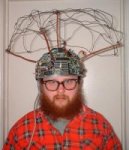I have an Alesis iO2 USB pre which works well for me. Due to another use in addition to using it for a recording interface, it has come up that the sample rate (24 bit) is fixed and the frequency variable up to 48khz. Another model of the iO2 says both bit-rate and frequency are variable. That's all well and good. My question is:
How does it know?
There is no way to set rates on the unit itself. Does it "talk" to the program it's feeding and match the rate(s) set there?
Thanks.
How does it know?
There is no way to set rates on the unit itself. Does it "talk" to the program it's feeding and match the rate(s) set there?
Thanks.

